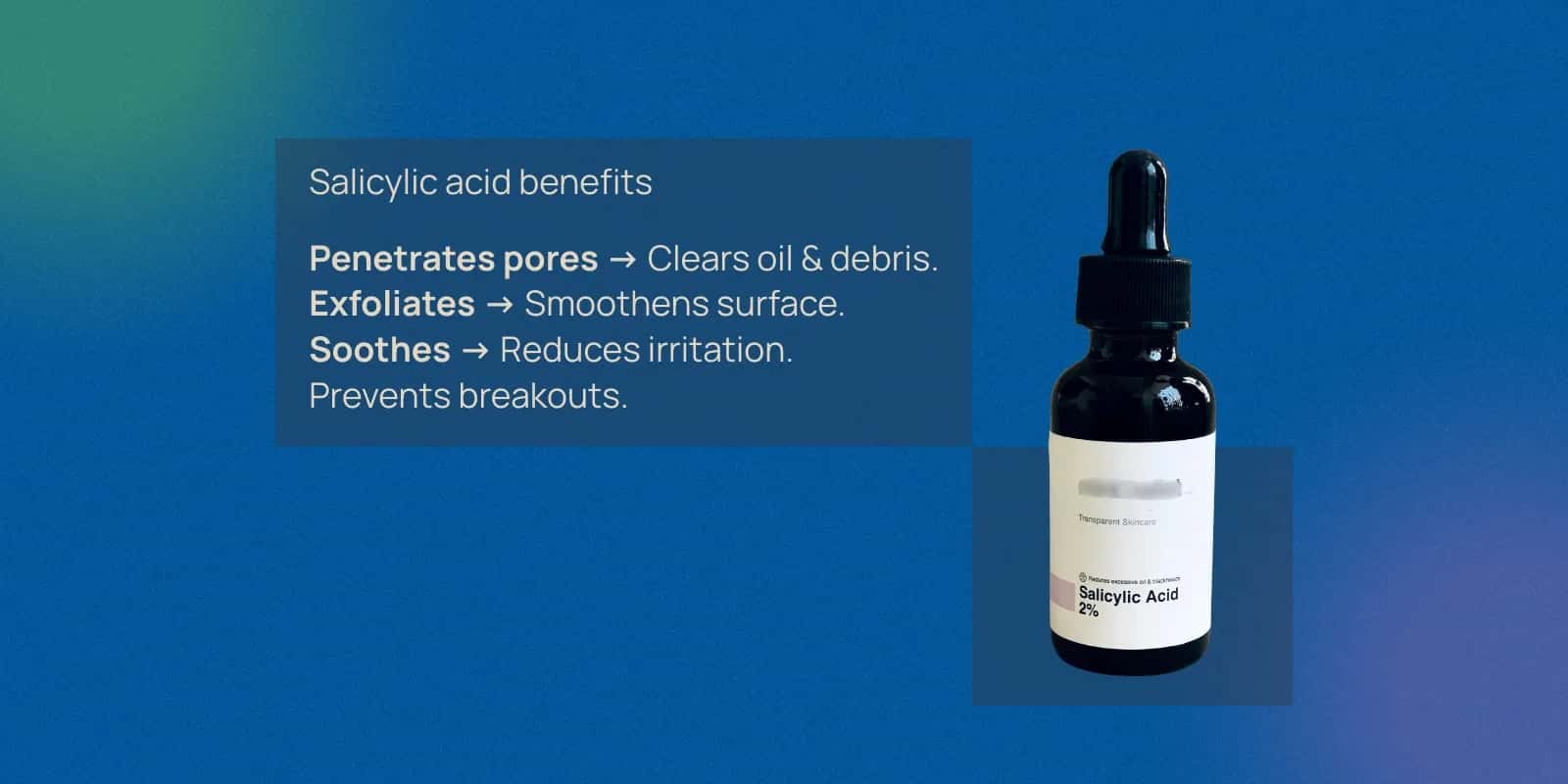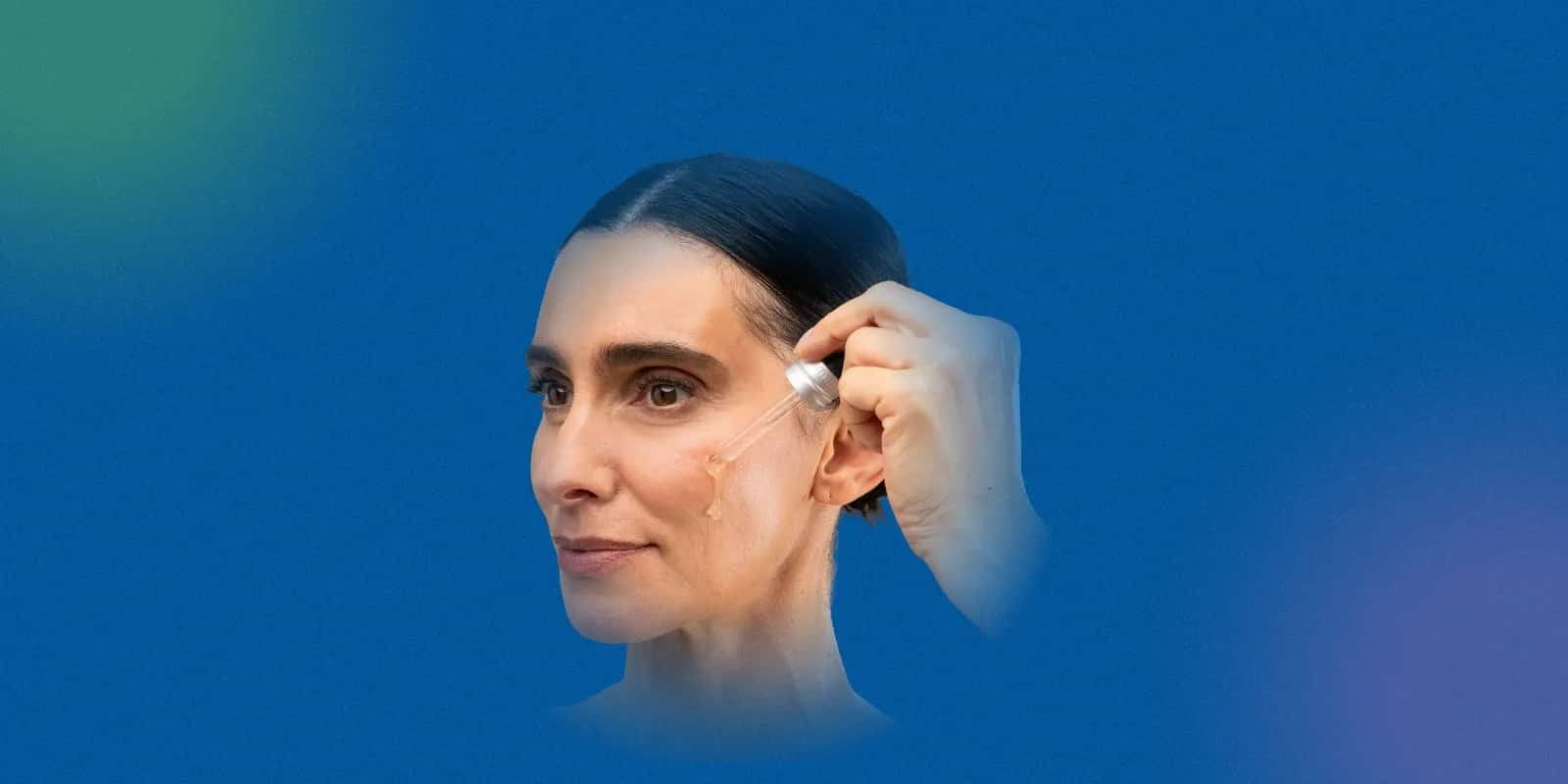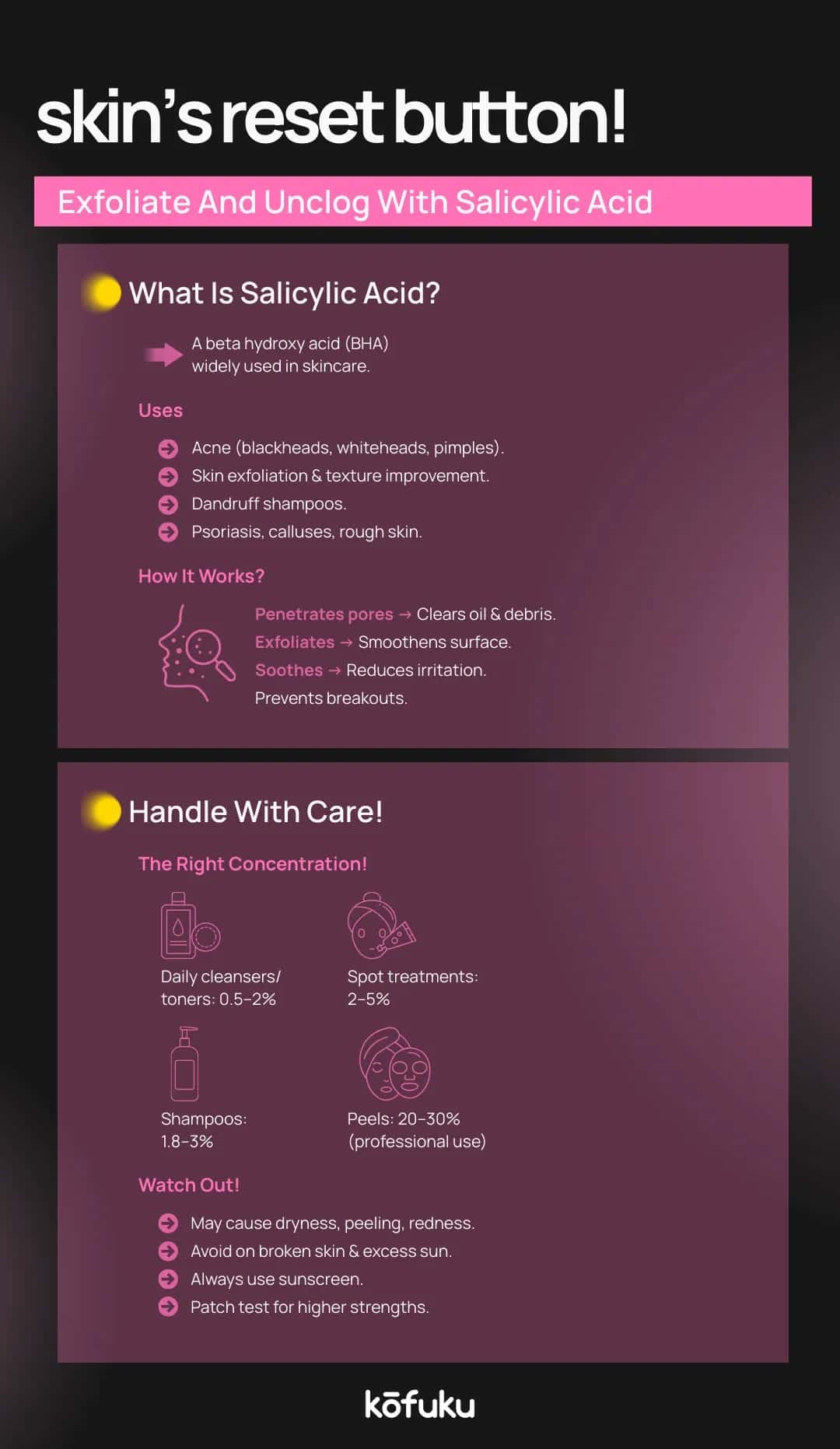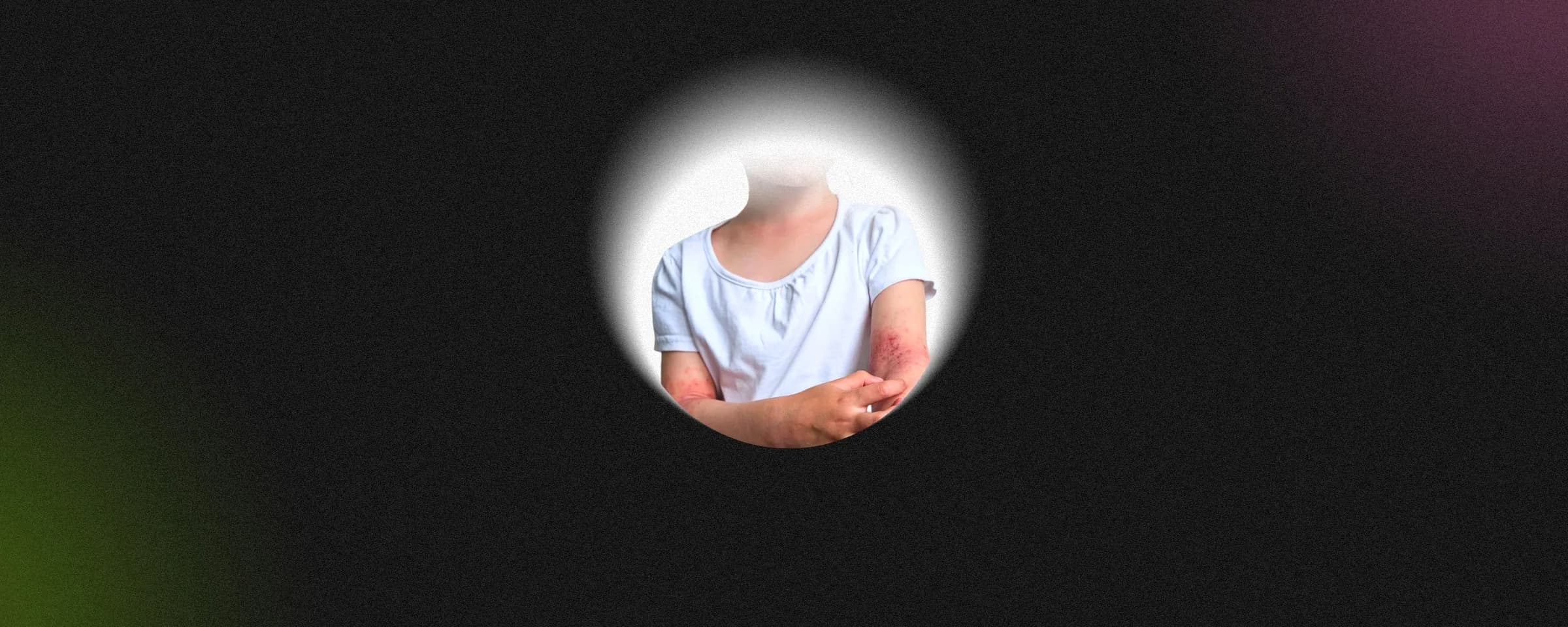Understanding Salicylic Acid: What It Is and How It Works on Skin

Introduction
Have you ever been down the skincare section of the mall in India and seen just how many creams, gels, and ointments bear the name salicylic acid on their packaging? Whether you are treating acne or softening foot corns, salicylic acid has become a go-to solution at dermatology clinics as well as in home skincare routines. What is it exactly that this ingredient does, and why has it secured itself a place in day-to-day skin health conversations?
This article breaks down everything you need to know about salicylic acid: its different forms, uses, benefits, how to apply it safely, and the results you can expect.
Different Forms of Salicylic Acid: Ointments, Creams, and Gels
Salicylic acid exists in several forms, and each of them has its own intended use.
- Ointment with salicylic acid: Commonly prescribed for stubborn skin concerns like corns and warts. These ointments penetrate deeply, softening hardened skin layers for gradual removal.
- Salicylic acid 2% cream: Comes in lighter formulations often used for mild acne, blackheads, and general exfoliation.
- Salicylic acid facial cream: Designed specifically for facial use, balancing exfoliation while minimising irritation.
- Salicylic ointment: Similar to creams but thicker, targeting rough skin patches, calluses, and psoriasis.
- Salicylic acid gel 2%: A popular over-the-counter option for acne spots, applied directly to blemishes for quick drying and healing.
All forms differ in concentration and texture, and each should be used depending on which issue you are treating (acne, thickened skin, rough skin, etc.).

Salicylic Acid Uses for Skin: Acne, Corns, Warts, and More
Salicylic acid is a different beta-hydroxy acid (BHA) with unique oil-solubility. It is much more effective in skin care because, unlike water-based exfoliants, it penetrates the pores deeply.
Common Uses:
-
Acne treatment: One of the most common uses of salicylic acid for the face is unclogging pores, reducing blackheads, and minimising pimples.
-
Warts and corns: Salicylic acid for foot corn and plantar warts works by dissolving keratin, softening thick skin layers until the growth is removed.
-
Psoriasis and dandruff: Used in medicated shampoos and creams to reduce scaling and itching.
-
Exfoliation: Helps shed dead skin cells, improving skin texture and tone.
While comparing salicylic acid before and after results, users often report visibly clearer skin, smoother texture, and reduced oiliness within weeks of consistent application.
How to Use Salicylic Acid on the Face: Step-by-Step Application Guide
The question many people would want to ask is: how to apply salicylic acid to the face without damaging the skin? The trick is in adequate usage.
Step-by-step guide:
- Cleanse your face with a mild, non-irritating cleanser.
- Pat dry, avoid rubbing, as damp skin may increase irritation.
- Apply a salicylic acid facial cream, gel, or serum evenly. Start with a lower concentration (e.g., 0.5-2%).
- Moisturise immediately after to maintain hydration.
- Use sunscreen daily, as exfoliation increases sensitivity to sunlight.
Consistency is more important than overuse. To start with, the dermatologists recommend using it on alternate days or once or twice a week, and then using it every day.
Is Salicylic Acid Good for the Face? Benefits and What to Expect
So, is salicylic acid good for the face? Absolutely, when used correctly. Key salicylic acid benefits include:
- Reduction of acne, pimples, and blackheads.
- Oil control for people with oily or combination skin.
- Visible improvement in skin clarity, as seen in before-and-after salicylic acid case studies.
- Prevention of future breakouts by keeping pores clear.
Depending on the skin type, results are different. Individuals with delicate skin types should avoid creams with high percentages or instead use a salicylic acid and lactic acid combination since they are softer on the skin.
Combining Salicylic Acid with Other Ingredients: Lactic Acid and More
Knowing what to use with salicylic acid makes a big difference in results.
- Lactic acid: A mild alpha-hydroxy acid (AHA). When combined with salicylic acid (BHA), it creates a balanced exfoliation routine. Salicylic penetrates pores, while lactic smooths surface texture.
- Niacinamide: Helps calm irritation and strengthens the skin barrier, making it a perfect partner.
- Hyaluronic acid: Prevents dryness by restoring hydration.
Avoid using salicylic acid, strong retinoids, or harsh scrubs on the same day, as this can cause excessive peeling.

Safety and Side Effects: Can You Use Salicylic Acid Every Day?
The question many users ask is: Can we use salicylic acid every day?
- For mild acne and oily skin, daily use of salicylic acid 2% cream or gel may be safe.
- For sensitive or dry skin, every other day is safer.
- Side effects may include dryness, redness, and mild peeling, especially at the start.
If irritation is persistent, it is advisable to reduce concentration or consult a dermatologist.
Salicylic Acid for Foot Corns: How It Works and Application Tips
Corns and calluses can be sore and very persistent, especially for people who walk a lot as part of their daily routine or wear firm shoes. Salicylic acid for foot corn is one of the usual treatments.
- Available in ointments with salicylic acid, medicated plasters, and creams.
- Works by softening the hardened skin layers, allowing gradual removal.
- Application usually requires cleaning the area, applying the salicylic ointment, and covering it with a bandage.

FAQs
Q. What is salicylic acid used for in skincare?
A. Salicylic acid is widely used in skincare for acne treatment, blackhead removal, reducing oiliness, and exfoliation. It also softens thickened skin, helping with corns, calluses, and warts by breaking down keratin layers effectively.
Q. How do I use salicylic acid on my face safely?
A. To use salicylic acid safely, cleanse your face, apply a cream or gel in thin layers, moisturise afterwards, and apply sunscreen. Start with lower concentrations and alternate days before progressing to daily application.
Q. Is salicylic acid good for the face?
A. Yes, salicylic acid is suitable for the face when used properly. It unclogs pores, reduces acne, improves skin texture, and controls oil. However, overuse may cause dryness, so moderation and proper moisturisation are essential.
Q. What are the benefits of salicylic acid cream and ointment?
A. Salicylic acid cream helps with acne, blackheads, and mild exfoliation, while ointments target thick, hardened skin, corns, and psoriasis. Both improve texture, clarity, and skin health by encouraging natural shedding of dead skin cells.
Q. Can I use salicylic acid every day on my skin?
A. Daily use of salicylic acid is safe for oily or acne-prone skin, but sensitive types should limit it to alternate days. Always moisturise and protect with sunscreen to prevent dryness, irritation, or increased sensitivity.
Q. What is the difference between salicylic acid cream 2% and gel 2%?
A. Both contain 2% salicylic acid, but creams suit overall application, providing hydration and mild exfoliation. Gels, on the other hand, are lighter, dry faster, and ideal for spot treatment on acne, blackheads, or specific skin patches.
Q. How does salicylic acid help in treating foot corns and calluses?
A. Salicylic acid softens thickened skin by dissolving keratin, gradually removing corns and calluses. Applied regularly through ointments, creams, or medicated plasters, it reduces pain, smooths hardened areas, and restores natural, healthy skin texture effectively.

Best Creams and Remedies to Heal Cracked Heels Fast

Tretinoin Cream (Topical and Ophthalmic): Overview, Uses & Key Benefits

Your Guide to Allergy Medications: Tablets, Creams, and Remedies


